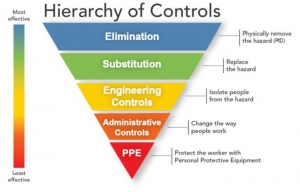Managing safety often lies in the hands of a Safety Manager or Director, and sometimes even those with other hats such as Facilities, Human Resources, and Office Management. We understand that someone must be responsible for creating, implementing, tracking, coaching, and investigating all things safety related, but can YOU put all of your faith and trust in just one person? What if you only see that person a couple of times a year? What if only a couple of times per day? The question is, WHO is responsible for your safety? If you did not say that YOU are responsible for YOUR safety, then we may have a problem. The best person to ensure that you don’t do something foolish, or wrong, is you. You are the one doing the activity or performing the task. Think back to some of the things that you have done that were not safe.
When was the last time you were in a vehicle without a seat belt on? Did you wear a helmet while riding your bicycle? Have you ever used a screwdriver as a prying tool? When you last mowed your lawn, was the discharge chute tied up? Have you ever switched a receptacle or light switch out without disconnecting the power to the area? Why didn’t you use the handrail when you were on the stairs last time? The answers to many of these questions are predictable, yet daily they still happen. Did you know that, on average, there are over 250,000 injuries annually from kitchen knives alone?
When determining risk, we need to think of a Hierarchy of Controls that tells us what the steps are to ensuring the task is performed correctly and completely. For example, using a circular saw has many hazards such as a high-speed rotating blade, electricity, dust, and lacerations. Using the Hierarchy of Controls, elimination is the best option and PPE is the last choice!

We MUST do something to prevent injuries. Think of the acronym SLAM – Stop, Look, Analyze, Manage.
Stop – think about the task needing to be performed and the steps for successful completion.
Look around – identify anything that could be hazardous or cause an injury.
Analyze – what needs to be done and determine how to do the task correctly.
Manage – follow the directions, follow the rules, and follow the procedures for safe use.